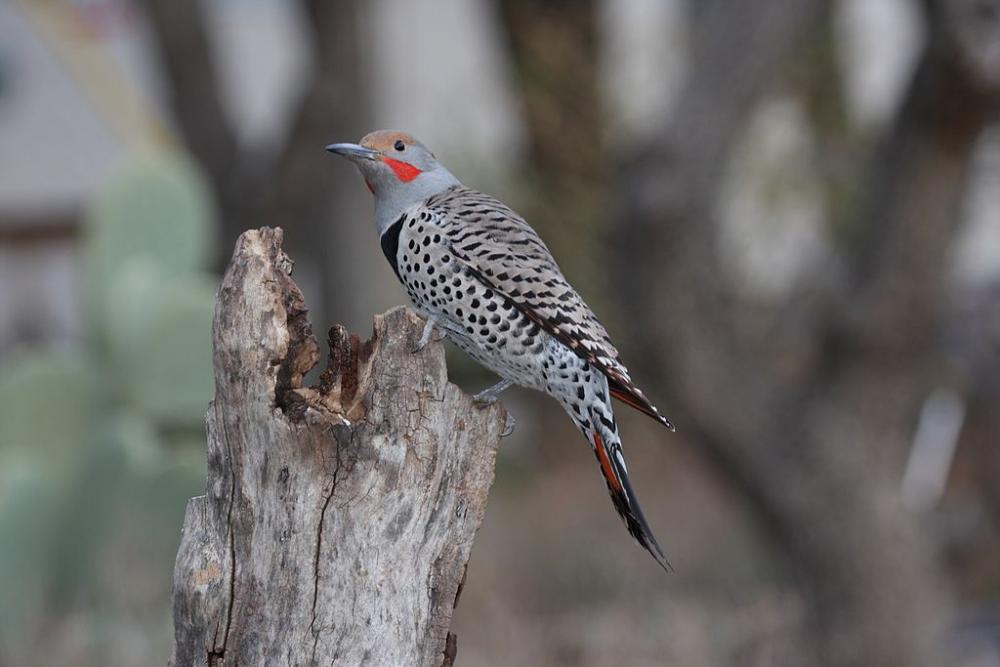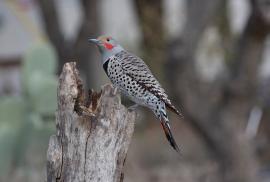Guide to Boreal Birds
Overview
Northern Flickers occur in two color forms: the "Red-shafted" in the West and the "Yellow-shafted" east of the Rocky Mountains. The Gilded Flicker, found in the Sonoran Desert of the Southwest, has recently been split off as its own species. The ice ages separated the ancestral flickers, keeping them scattered in several refugia for thousands of years. Today those barriers are gone. The Gilded has become adapted to the desert, whereas the two northern populations inhabit the same type of woodland habitat, with only the treeless Great Plains keeping them somewhat apart. All three forms interbreed where their ranges come together, and numerous confusing intermediates can be found. In the East, flickers are the only brown-backed woodpeckers, and the only woodpeckers in North America that commonly feed on the ground, searching for ants and beetle larvae.
Description
12" (30 cm). A large brownish woodpecker. Brown back with dark bars and spots; whitish or buff below with black spots; black crescent on breast; white rump, visible in flight. Eastern birds ("Yellow-shafted Flickers") have red patch on nape and yellow wing linings; male has black mustache. Western birds ("Red-shafted Flickers") lack nape patch and have salmon-pink wing linings; males have red "mustache."
Voice
A loud, repeated flicker or wicka-wicka-wicka; also a loud kleeer.
Nesting
6-8 white eggs in a tree cavity, utility pole, or birdhouse.
Habitat
Open country with trees; parks and large gardens.
Range/Migration
Resident from Alaska east through Manitoba to Newfoundland and south throughout United States. Northernmost birds are migratory.



